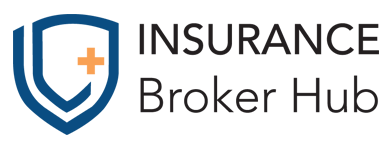Health insurance is a complicated topic. From trying to understand the alchemy of picking a coverage level to seeing if you will be able to keep your doctor under a new plan, it’s often a challenge to get what you want and need out of your health coverage. Understandably, that’s just the part of the insurance marketplaces focused on delivery.
Before you even get to that part, you have to understand where you’re buying your insurance. Especially if you haven’t bought from anywhere besides your employer, the answer might be a bit confusing. Yes, you will still have choices over the insurer, but you’re still going to need to take another step back. The first step is understanding which health insurance exchange exists in your state.
Exchange Management: How Is Your State Run?
During the passage of the ACA, states were given options in the management and maintenance of their health insurance exchanges, choosing either to run their own marketplace, defer to HealthCare.Gov, or operate a hybrid approach. These decisions have had a lasting impact on the window for citizens to enroll, the types of coverage available, and even the IT management for the websites.
How Do These Exchanges Differ? Responsibility
According to Health Affairs, the decision on whether a state wanted to run its own exchange was based on the responsibilities they wanted to take on. Here are just some of the factors that may fall into the hands of the state or the federal side of the equation:
- Regulatory flexibility and guidance: Often, state-run exchanges provide these areas with the greatest level of flexibility to design plans around the needs of customers. However, federal marketplaces will offer more guidance and coordination, albeit with less flexibility.
- Control over insurance markets: Depending on the model they have chosen, states, which have traditionally regulated insurance, will have varying levels of control over the health plans offered through the exchange in their state. State-based exchanges have full control over plan management within the exchange, including final responsibility for certifying plans in the exchange.
- Consumer outreach and education: States operating their own exchanges have full responsibility for running the consumer assistance functions of their exchanges, including establishing a web portal, call center, and navigator program to help people find and enroll in public or private coverage.
- Coordination: From Medicaid to IT systems, everything about open enrollment is based on coordination of activities. States operating their own exchanges may find such collaboration easier to manage within the state, although states with federally facilitated exchanges may experience greater difficulty establishing the necessary integration between state departments of insurance and Medicaid agencies and the federally facilitated exchange.
- Funding: Similar to the unique essential health benefits in each state, the funding platform has its own unique approach.
Four Different Exchange Management Approaches
In turn, this has left a few different approaches to health insurance exchange management for 2021 Open Enrollment, with some states operating a fully standalone exchange, others managing the delivery through the federal platform, and others still relying simply on the federal marketplace.
Federally Run Marketplace
Used by 24 states in Open Enrollment 2021, applicants are able to compare costs and options using the Healthcare.gov website. The federal health insurance marketplace (HealthCare.gov) opened for business in the fall of 2013 to mixed reviews. The federal exchange was created to fill a need when more than half the states decided that they didn’t want to run their own exchanges – either because they didn’t think it would be financially or technologically feasible.
In 2021, the following states will use the federal exchange to facilitate enrollment:
| Alabama
|
Alaska
|
Arizona
|
| Florida
|
Georgia
|
Hawaii
|
| Indiana
|
Louisiana
|
Mississippi
|
| Missouri
|
North Carolina
|
North Dakota
|
| Oklahoma
|
South Carolina
|
Tennessee
|
| Texas
|
Utah
|
Wisconsin
|
| Wyoming
|
Marketplace Plan Management Exchange
A variation of the federally run marketplace, Marketplace Plan Management Exchanges are used in Kansas, Montana, Nebraska, Ohio, and South Dakota. Under this option, states can conduct the same plan management functions as a state partnership exchange, while the federal government operates remaining core exchange functions.
States utilizing this option are generally categorized together with the states that have left the entire process to the federal government, but they retain plan management functions, which includes certification of plans that are sold in the exchange, as well as monitoring and regulatory control over the plans that are sold.
Partnership Exchanges
In addition to the federal exchanges, certain states use “partnership exchanges,” in which states have the option to be actively involved in Exchange operations while still using the federal marketplace website. Considered a step toward becoming a state-based exchange, the overall goal of a State Partnership Exchange is to enable the Exchange to run more efficiently in states with authority and capability to manage the delivery.
According to the CMS, a State Partnership Exchange enables states to assume primary responsibility for carrying out certain activities related to plan management, consumer assistance and outreach, or both.
In Open Enrollment 2021, six states—Delaware, Illinois, Iowa, Michigan, New Hampshire, and West Virginia—will operate as partnership exchanges.
State-Based Marketplaces on Federal Platform (SBM-FP)
Considered the step between partnership exchange and state-based exchange, the SBM-FP puts more of the management in the state’s hands while still relying on the enrollment infrastructure from the Federal Government.
For Open Enrollment 2021, residents of Arkansas, Kentucky, Oregon, New Mexico, Maine, and Virginia will be part of an SBM-FP and will seek out coverage through the federal marketplace.
Of these, many have put work in to transition to their own marketplace:
- Kentucky is currently working to transition to a state-based marketplace by fall 2021
- Maine notified CMS that they planned to transition the state to an SBM-FP by the fall of 2020 (and possibly to a fully state-run exchange by the fall of 2021).
- New Mexico currently runs its own SHOP exchange and is in the process of moving to a fully-run state-based exchange in fall 2021.
- Virginia has put forth legislation to move to a state-run exchange by 2023.
State-Based Exchanges
The main option for states who did not want to use the federal marketplace (and initially the only option), certain states opted to create and manage their own exchanges. Often, these exchanges have different rules—including longer timeframes to enroll, individual mandates within the state, and control over the structure and type of marketplace.
With their own unique rules, branding, and processes to apply, these fifteen states have their own websites for enrollment.
The Following states have their own state-run marketplaces in 2021.
| California | Colorado | Connecticut |
| District of Columbia | Idaho | Maryland |
| Massachusetts | Minnesota | Nevada |
| New Jersey | New York | Pennsylvania |
| Rhode Island | Vermont | Washington |
An Easier Way to Navigate: Free Service Matches Price and Needs
For those seeking health insurance, this decision impacts the way you would normally search for insurance, either going to the federal marketplace, their respective state marketplaces, or secure insurance with the help of a broker. Though both federal and state marketplaces have made it easier to find options, finding the right option is rarely as easy as it seems.
That’s where we come in. Our free service gives you access to an independent network of national brokers who have the experience and expertise to design a plan around your needs and budget. Our network of brokers will tailor a complete solution for your health coverage needs.
Ready to get started? Simply request a no obligation health insurance quote here.


